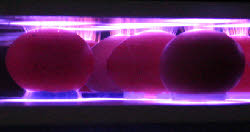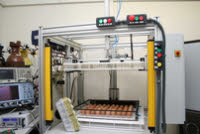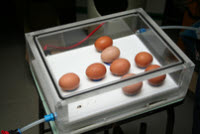



New Plasma Treatment Sterilises Eggs Gently
NORWAY - A new plasma treatment removes 99.5 per cent of all bacteria on the egg shell but leaves the egg yolk and white unaffected.At Easter, Norwegians eat twice as many eggs as during the rest of the year, and they can safely eat them raw, soft boiled, or fried. In the EU on the other hand, eggs are the commonest source of Salmonella food poisoning, according to Nofima. However, new research offers hope for egg-loving EU citizens.

Askild Holck, senior research scientist at Nofima, said: "By using plasma treatment, we have succeeded in removing 99.5 per cent of all bacteria on the egg shell but because this is a gentle method, the egg yolk and white are unaffected."
Bacteria-free eggs with plasma technology
As part of a major European research project on egg sterilisation, researchers in several European countries have developed a new technology in which plasma is used as a method for killing Salmonella on egg shells.
The eggs are placed in an enclosed chamber, which is filled with gas at atmospheric pressure. Then electricity is used to create plasma. Practically all the bacteria can be killed without affecting the eggs. What happens is that the plasma treatment sterilises the eggs, while at the same time killing bacteria. There are other methods for making eggs safe but plasma appears to be the safest, as well as the most gentle. The use of chemicals, for example, is not allowed because they can have a negative effect on the egg itself.
Dr Holck explained: "In order to check the effect of plasma technology, we have placed various Salmonella and other bacteria on the surface of eggs and then given them a plasma treatment. After the plasma treatment, we washed the eggs and found out how many bacteria had survived. The effect of the treatment depends on the exact gas mixture surrounding the eggs, how the electricity is applied, and the length of treatment."
He has been responsible for microbiological work and has helped in the design of technical solutions. Among other things, it turns out that the use of small containers gives better results than large ones and that using UV light sources in the plasma increases the lethal effect.

below: The eggs are placed in an enclosed chamber

Great expectations for the research project
The increasing use of eggs and egg products highlights the need for destroying dangerous bacteria, and the food industry is keen to find new ways of sterilising eggs.
Using plasma technology has two important advantages. One is safer eggs, meaning fewer cases of Salmonella poisoning. The other is that the shelf life of the eggs is increased.
The use of plasma technology is a promising method and researchers are looking to improve the method even more before it comes into use by companies. There remains the challenge of up-scaling the equipment for industrial applications, for example.
About plasma
When gas is exposed to a high-frequency electromagnetic field, electrons are released from their atoms and a mix of free electrons and charged atoms (ions) is created. This condition of the substance is called plasma. The gas in a fluorescent tube creates plasma when the current is turned on. The sun is a huge ball of plasma. The free electrical charge carriers mean that plasma is a very good conductor of electricity. Running a current through plasma also induces magnetic fields, which in turn affect the plasma, pressing it together into filaments. Such filaments can be seen in the picture of eggs in a plasma chamber.








